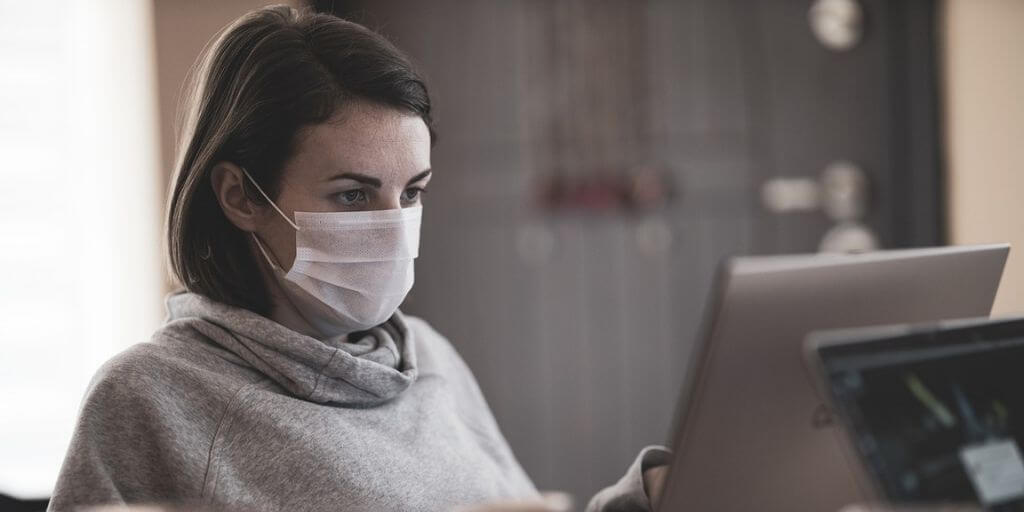On Labor Day 2021, Governor Kathy Hochul announced that the COVID-19 resurgence warrants implementing the safety plans required by the New York HERO Act. The law permits the NYS Commissioner of Health to invoke airborne infectious disease exposure prevention plans across all private-sector workplaces. To do so, the Commissioner must declare that a highly contagious communicable disease presents a serious risk of harm to the public health. The HERO Act became law as a result of the coronavirus pandemic earlier in 2021. However, it was intended to apply to future outbreaks. COVID-19 was seemingly under control at that point. Yet, the latest transmission rates prompted the invocation of the new law for the pre-existing disease.
The initial designation is effective until September 30, 2021. The Commissioner of Health will review whether to extend it at that time.
Private Employers Must Implement Their Plans
The NY HERO Act only applies to private (non-government) employers. The airborne infectious disease exposure prevention plan requirements apply to all New York entities with at least one employee. Employers had to adopt a compliant plan by August 5, 2021. But at that time the plans were effectively dormant pending a Commissioner of Health declaration that has now come.
For more on plan requirements, click here.
Plan Review
The initial plan requirements (and template plans) from the NYS Department of Labor were relatively vague. It was challenging to detail appropriate measures for combating an unknown future disease.
But now we know a lot about the disease prompting plan implementation: COVID-19. Or at least, we have nearly 18 months of experience trying to prevent the spread of this disease.
Employers should reevaluate their plans based on their previous experience with COVID. Revisions to the plan itself may not be necessary. But past efforts should at least guide the current implementation of your airborne infectious disease exposure plan.
Reviewing the Plan with Employees
Employers must now conduct a verbal review of:
- employer policies;
- employee rights under section 218-b of the NYS Labor Law; and
- their airborne infectious disease exposure prevention plan.
This review should be done “in a manner most suitable for the prevention of an airborne infectious disease.” Options suggested by the DOL include in-person with good ventilation and face masks or via audio/video conference technology.
Employers must also provide a copy of their plan to all employees as implemented. Some employers may need to provide the plan in Spanish to employees for whom that is their primary language. (Additional languages may be required when the DOL provides model plans in that language.)
Ensuring Ongoing Compliance
While the airborne infectious disease exposure prevention plan remains in effect, employers must continually ensure that it is followed.
Companies must:
- assign enforcement responsibilities to supervisory employees and ensure adequate enforcement;
- monitor and maintain exposure controls; and
- regularly check for updated information and guidance from the NYS DOH and the CDC.
Mandatory Controls
Although employers have discretion in many aspects of their plans, the DOL standard requires the following components:
Health Screening
As under previous NYS reopening guidance, employers must again screen employees for COVID-19 symptoms at the beginning of each workday.
You must then follow applicable protocols regarding testing, isolation, and quarantine before allowing symptomatic or infected employees to return to work.
Face Coverings
Companies must provide appropriate face coverings to all employees at no cost.
Employees must wear face coverings when physical distancing is not possible, following DOH and CDC guidelines.
Physical Distancing
Physical distancing must be used when possible to keep employees at least 6 feet apart.
Hand Hygiene
Employers must provide handwashing facilities and/or hand sanitizing supplies.
Cleaning and Disinfection
Each company must have a plan for cleaning and disinfection that includes the methods of decontamination based on relevant workplace factors.
Following DOH and CDC Guidelines
The NYS DOL’s airborne infectious disease exposure prevention standard compels employers to follow guidance from the NYS DOH and the CDC. It seems that much of the current CDC guidance is permissive rather than compulsory. So it’s unclear whether New York employers must now satisfy all CDC suggestions or only strict requirements. Furthermore, it’s possible that the DOH will issue updated guidance due to the renewed declaration. In essence, this may eventually be a method of returning to the 2020 regime where the State established the conditions under which businesses could operate. But in the meantime employer’s exact obligations remain somewhat uncertain, unfortunately.
As always, you can follow Horton Law on LinkedIn for the latest news and updates on COVID-19 compliance, the NY HERO Act, and other topics of interest to New York employers.
